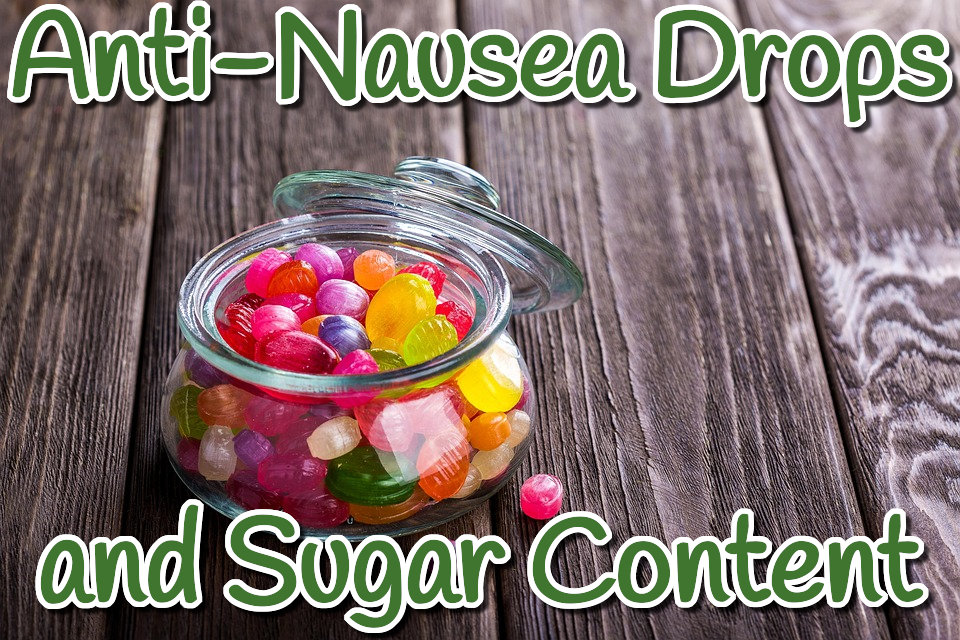Anti-Nausea Drops and Sugar: What You Need to Know for Healthier Choices 2025

June 4th, 2025 | Motion Sickness, Nausea
Nausea can strike at the worst times and for many reasons—pregnancy, travel, medical treatments, or queasiness from daily life. Anti-nausea drops step in to offer sweet relief, but there’s more inside these candies than flavor. Sugar content deserves close attention, especially for those managing dietary restrictions, sugar sensitivities, or chronic health issues like diabetes. Even health-conscious eaters may want to know exactly what they’re consuming when reaching for nausea relief. Understanding the sugar story in these products can help you make a better choice for your health and peace of mind.
The Truth About Sugar in Anti-Nausea Drops
Sugar often plays a starring role in traditional anti-nausea drops. Its job goes beyond taste—it affects how long a product lasts and how it feels in your mouth. But not everyone can take sugar lightly. Children, people with diabetes, and those on low-carb diets need to watch their sugar intake closely. For these groups, sugar content can make the difference between finding comfort and complicating their health.
Sugar-free remedies exist for good reason. Queasy Drops Sugar Free offers nausea relief without extra sugar, helping people find safe options tailored to their needs.
Why Sugar Is Commonly Used in Anti-Nausea Remedies
Sugar isn’t just for sweetness. In anti-nausea drops, it helps:
- Mask Bitter Flavors: Nausea-fighting ingredients often taste strong or unpleasant, so sugar covers the bitterness.
- Increase Palatability: Smooth and sweet flavors make taking the drop easier, especially for kids or those already feeling unwell.
- Extend Shelf Life: Sugar acts as a natural preservative, keeping drops fresh longer.
- Supply Quick Energy: For those needing a fast energy boost (like during sickness or while pregnant), sugar can provide a small pick-me-up.
While these roles help make the product effective and appealing, they’re not always the best fit for every consumer.
Potential Downsides of Sugar in Anti-Nausea Drops
Sugar isn’t always as sweet as it seems. Here are some concerns to consider:
- Raises Blood Sugar: Those managing diabetes or other blood sugar issues must be careful. Even small candies can add up throughout the day.
- Affects Dental Health: Sucking on hard drops exposes teeth to sugar for longer periods, increasing the risk of cavities.
- Adds Unwanted Calories: For those watching their weight, frequent use of sugary drops can add unnecessary calories.
- Not Fit for All Diets: Some low-carb, keto, or sugar-free diets strictly avoid regular sugar.
For more information on non-sugar-based solutions and natural options to ease queasiness, check out the guide on Natural Remedies for Nausea Relief.
Sugar-Free and Low-Sugar Alternatives
Enter the sugar-free and low-sugar drops—formulated for effective nausea relief without the drawbacks of sugar. These alternatives use sweeteners like sorbitol or xylitol that don’t spike blood sugar and have less impact on dental health. They’re just as effective at targeting nausea and are often recommended for people with dietary restrictions.
Choosing sugar-free products, like Queasy Drops Sugar Free, lets you enjoy queasiness relief with your health needs in mind. These options typically pass the taste test and maintain shelf life, so you can feel good about what’s in your remedy.
How to Choose the Right Anti-Nausea Drops Based on Sugar Content
Choosing the right drop is a bit like reading between the lines—label lines, that is. Ingredients and nutrition facts tell you everything you need to know about what you’re putting in your body.
Talk with your doctor, especially if you’re pregnant, diabetic, or buying for children. Review multiple products side by side and focus on both sugar content and the active ingredients that ease nausea. For informed choices on popular remedies for pregnancy, Preggie Pops FAQ answers common questions and covers ingredient details.
Tips for Reading Ingredient Labels and Nutrition Facts
Here’s how to zero in on sugar information quickly:
- Check Serving Size: Sometimes a serving is less than a full piece, hiding extra sugar.
- Look for Sugar and Sugar Alcohols: Separate these ingredients, as sugar alcohols don’t spike blood sugar the same way regular sugar does.
- Compare Total Carbohydrates: For strict carb counters, this number matters just as much as total sugar.
- Spot Hidden Sugars: Corn syrup, dextrose, fructose, and honey all count as sugar.
- Scan the Ingredient Order: Ingredients near the top are present in larger amounts.
Making sense of the label reduces guesswork and helps you find a drop that fits your needs.
Popular Anti-Nausea Drops and Their Sugar Profiles
Not all nausea drops are created equal. Here’s a simple rundown of some common choices from Threelollies:
- Standard Drops: These include sugar and glucose syrup as main ingredients, making them tasty but higher in sugar.
- Queasy Drops Sugar Free: These cut sugar completely, using sugar substitutes to keep the same nausea-fighting effects.
- Other Queasy Products: For an overview of options and their specific benefits, the Queasy Products Overview page breaks down choices for different needs.
Compare options based on total sugar, ingredient types, and whether special sweeteners are used.
Special Considerations for Pregnant People, Children, and Chronic Conditions
Pregnancy brings its own set of rules. For some, low blood sugar can worsen queasiness, so a little sugar helps. Yet gestational diabetes or personal dietary preferences might demand a sugar-free option. Children’s developing teeth and unique nutrition needs mean sugar intake should be carefully monitored.
Diabetics or those with other chronic issues must always watch out for hidden sugars in seemingly harmless products. If you’re unsure what fits best, the Preggie Pops FAQ answers key questions about ingredients, safety, and sugar content in popular anti-nausea drops for pregnancy.
Conclusion
Anti-nausea drops and sugar content deserve more than a quick glance. Whether you’re pregnant, caring for a child, watching your blood sugar, or just aiming to make healthier choices, reading labels is smart. Balancing effectiveness and sugar content is possible, especially with options like Queasy Drops Sugar Free on the shelf. Your body, your rules—choose drops that suit your needs so you can feel better faster, with nothing extra on your plate.
Recent Posts
- Struggling with Chemotherapy Over the Holidays
- Navigating the Holidays with Ease: Managing Travel Sickness While Enjoying the Feasts
- Holiday Travel With Morning Sickness: A Calm Traveler’s Guide
- The Friendly Guide to Keeping Pregnancy Nausea at Bay
- Beat the Morning Sickness Blues: DIY Ginger Remedies for a Calmer Pregnancy
Categories
- All-Natural (4)
- Blog (47)
- Cancer (72)
- Diet (15)
- Holidays (22)
- Lifestyle (67)
- Motion Sickness (44)
- Nausea (103)
- New Mothers (34)
- Oncology Testimonials (3)
- Prebiotics (1)
- Preggie Products (4)
- Preggie Testimonial (23)
- Pregnancy (156)
- Queasy Products (7)
- Queasy Testimonial (17)
